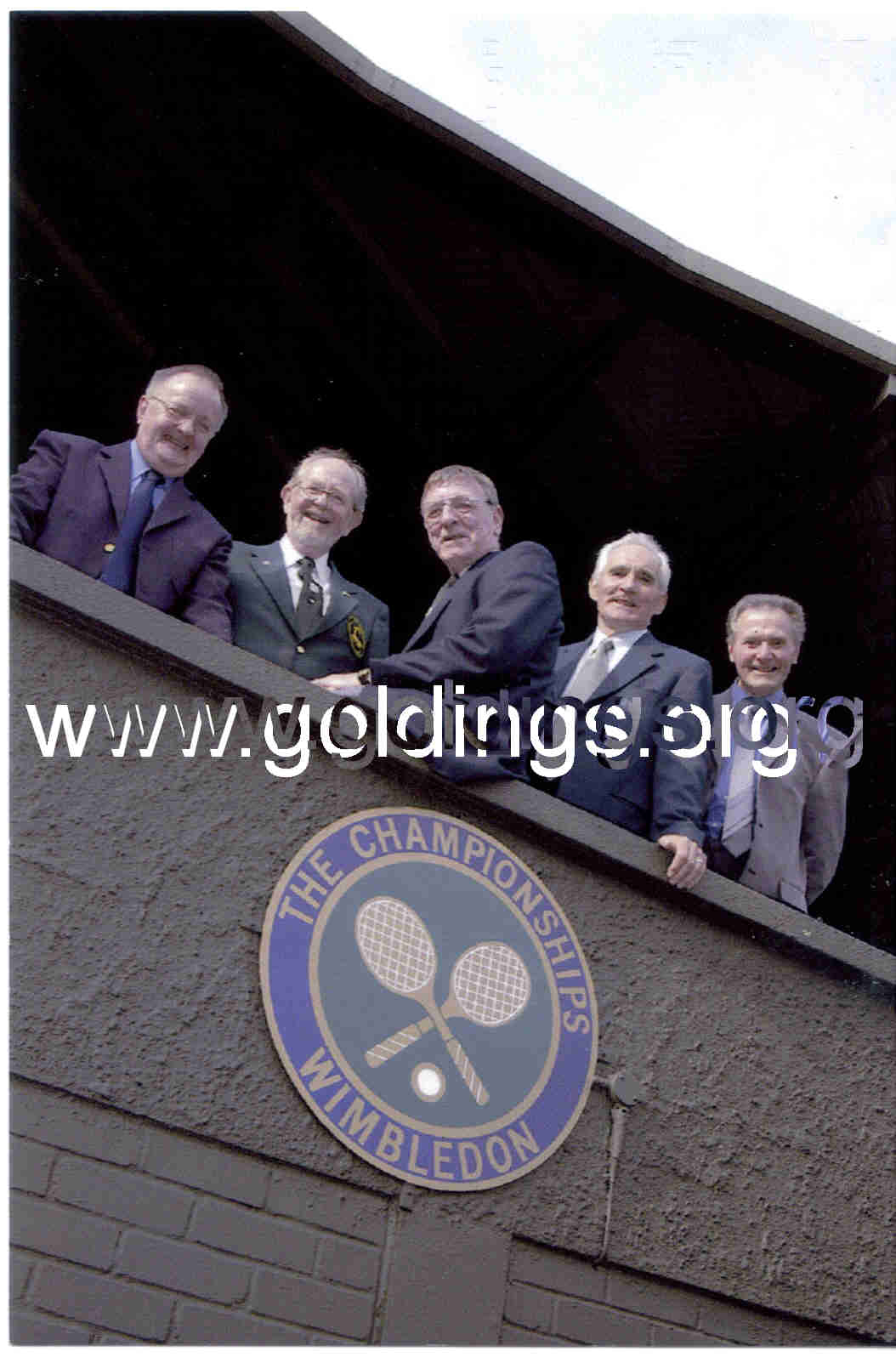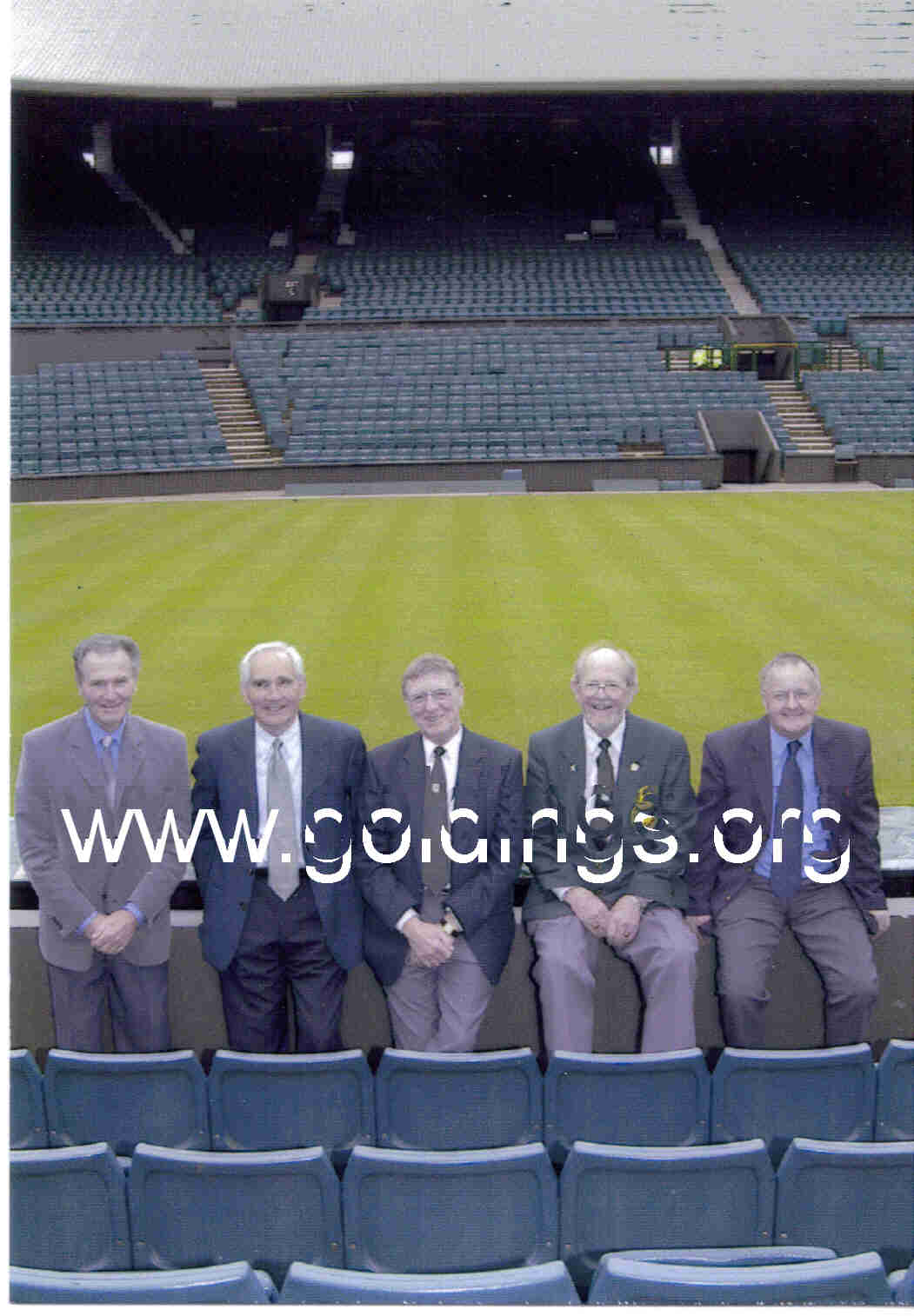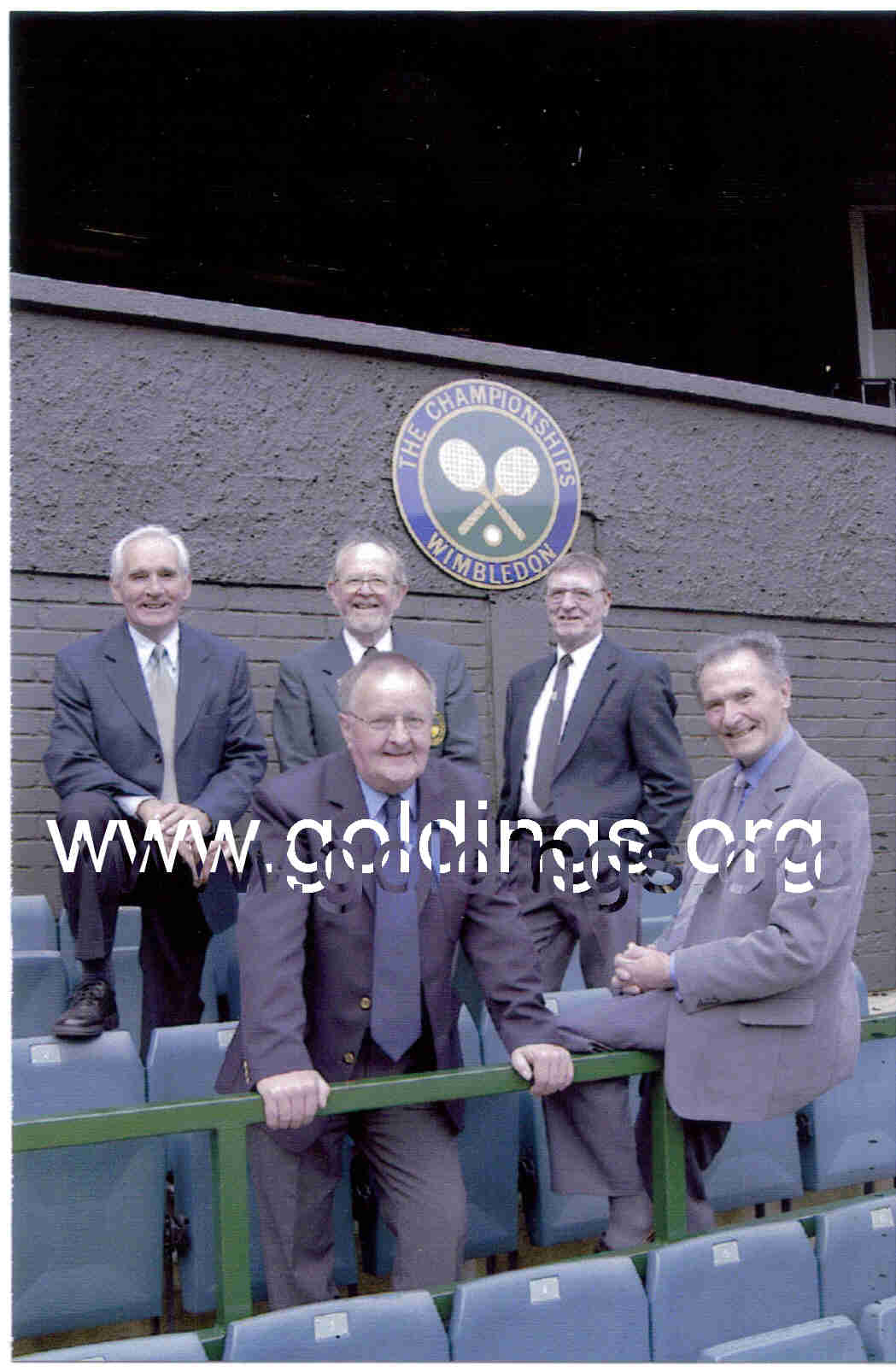|
And so it was that Barnardo's boys came to the championships, at the lowest point in their 130 year history. And they stayed -
bused each day during Wimbledon fortnight from Hertford to London and back - until Goldings closed 1966.
The job of a Wimbledon ball boy was only given to one third of the school and competition was fierce to be selected. For
around a month before each championship, Goldings boys would practice throwing, catching and chasing balls on the staff grass
courts hoping to be chosen for a coveted place. Inevitably, this was also a time when boys were on their 'best behaviour' as any
misdemeanour could lead to your name being dropped from the list. All training was under the watchful eye of a supervisor and
trainer In the 1950s this was the school chaplain, Rev Corbett, a strict disciplinarian, and in the early '60s it was the Rev Bernard.
L Nixon.
Going to Wimbledon gave young men aged 14 to 18 years the chance to be a part of one of the most prestigious international
sporting events. It also meant freedom, freedom from bugle calls and a regimented routine; freedom to meet celebrities and
players with 'exotic' American, French and Australian accents from around the world; and, best of all, a Goldonians blazer gave ball
boys the right to go almost anywhere in the Wimbledon complex. No wonder it led to some practical pranks and joking around.
Goldonian boys were not the only ones who wanted to attend. It's rumoured that the masters used to cajole and do their best to
go along too, for once they had escorted the boys to the courts, there was little to do except watch the matches.
Between 1946 and 1966, the Wimbledon championship gradually grew in size and status. The advent of air travel in the 1950s
attracted many more overseas players. But the greatest changes of all occurred in 1967, the year after the Goldings boys had left t
he courts for good.
For it was in this year that an invitation tournament was sponsored by the BBC to mark the introduction of colour television and
later that year professional players were admitted to the championships for the first time. It was the start of a new era.
The Wimbledon of today bears little resemblance in many ways to the championships of years gone by. and, as noted by the Old
Boys on their recent visit, ball boys today need three months training before the event, whereas Barnardo's boys only needed
one month!
|





